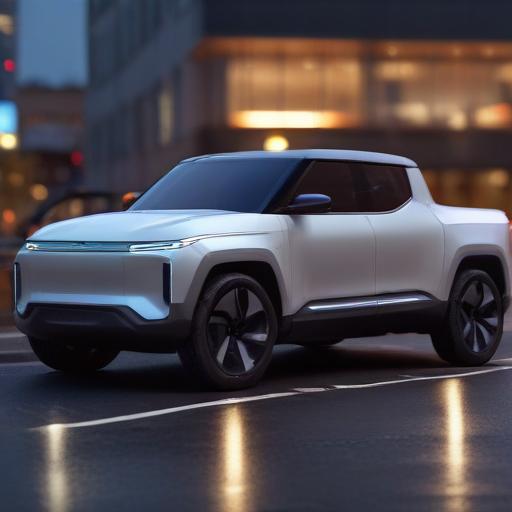Slate aims to reinvent the small-truck segment with a lean, affordable electric pickup that challenges the industry’s trend toward larger, heavier rigs. After introducing the concept with a starting price touted around $20,000, the project rode a wave of early enthusiasm, including more than 100,000 pre-orders. Yet the path forward has grown more complex as incentives shift and competition tightens.
Key details and design philosophy
– Size and setup: The Slate Truck is a compact, rear-wheel-drive EV at 174.6 inches in length—roughly six inches shorter than the old Ranger and notably shorter than the Maverick—yet it claims a six-inch longer bed. It delivers 201 horsepower and a range near 150 miles, with an optional larger battery adding about 90 miles of range.
– Seating and transformation: By default, it seats two but can be converted into a five-seat vehicle with a kit that adds rear seats and a bed cover, effectively turning the pickup into a crossover/SUV as needed. The conversion is designed to be performed with basic tools at home.
– Customization and materials: Slate emphasizes personalization through vinyl-style exterior kits and interior options, while sticking to a single color—slate gray. The interior and exterior lean heavily toward minimalism: there is no power windows, no audio suite, and no touchscreen. The idea is to minimize components that require software, ongoing development, and support.
– Body and paint strategy: The body panels are made from injected plastic rather than traditional metal panels, and there is no conventional paint process. The result is a streamlined manufacturing footprint: no paint shop, fewer stamping requirements, and a smaller plant footprint since production can be more leanly organized.
– Sales model: Slate plans to sell directly to customers online and deliver the vehicle without the typical dealership middleman, reducing some of the dealer markup and the associated costs and friction.
Market context and competitive pressure
– Pricing dynamics: The initial appeal hinged on a possible $20,000 price point after incentives. The elimination of federal EV credits—such as the $7,500 incentive—has forced Slate to reposition toward the mid-twenties, sharpening the price gap with competing models.
– Industry backdrop: The broader EV market remains uncertain. Battery-electric vehicle sales have continued to grow year over year, but the trajectory around incentives and demand remains dependent on policy shifts and consumer perception, especially in the wake of changes to subsidies.
– Competitor landscape: Ford is preparing a similarly sized electric pickup priced around $30,000, with features like a standard touchscreen and audio system. Slate argues that its first-mover advantage and ultra-lean design could appeal to a niche of buyers who prioritize practicality and customization over a long list of standard tech features.
– Timeline: Slate targets a 2026 launch window for its truck, with Ford aiming for 2027. Slate’s DIY-friendly approach and direct-to-consumer model could foster a dedicated community, even if mass-market adoption remains uncertain.
Strategic implications and outlook
– Lean design as a strength and risk: Slate’s frugal approach reduces capital outlays and operating costs, enabling a unique value proposition. However, the absence of common features and the minimalist software ecosystem could affect crash safety certifications, resale appeal, and multi-year reliability expectations.
– Customer ecosystem: By inviting DIY customization and home-based conversions, Slate cultivates a potentially loyal base of enthusiasts. The company’s strategy to bypass traditional showrooms could appeal to buyers wary of dealer markups and push-button tech dependencies.
– Potential industry impact: If Slate succeeds in delivering a functional, cost-conscious EV pickup with real-world utility and easy customization, it could spark broader conversations about what American consumers truly need from a compact truck and how far lean manufacturing and direct sales can take a new entrant.
Summary and forward-looking note
Slate proposes a bold rethinking of the small-truck space: a compact, electric, highly customizable vehicle designed to minimize cost through simplified hardware, a paint-free and feature-light approach, and direct-to-consumer sales. It faces meaningful hurdles from policy changes and stronger competition, but its lean model and DIY culture could carve out a dedicated niche and influence how automakers conceptualize affordable, practical EVs for everyday use.
If you’re exploring affordable, pragmatic EV options, Slate presents a distinct path that prioritizes function and customization over feature saturation. The coming years will reveal whether this lean experiment can scale from a niche curiosity into a broader market alternative.
